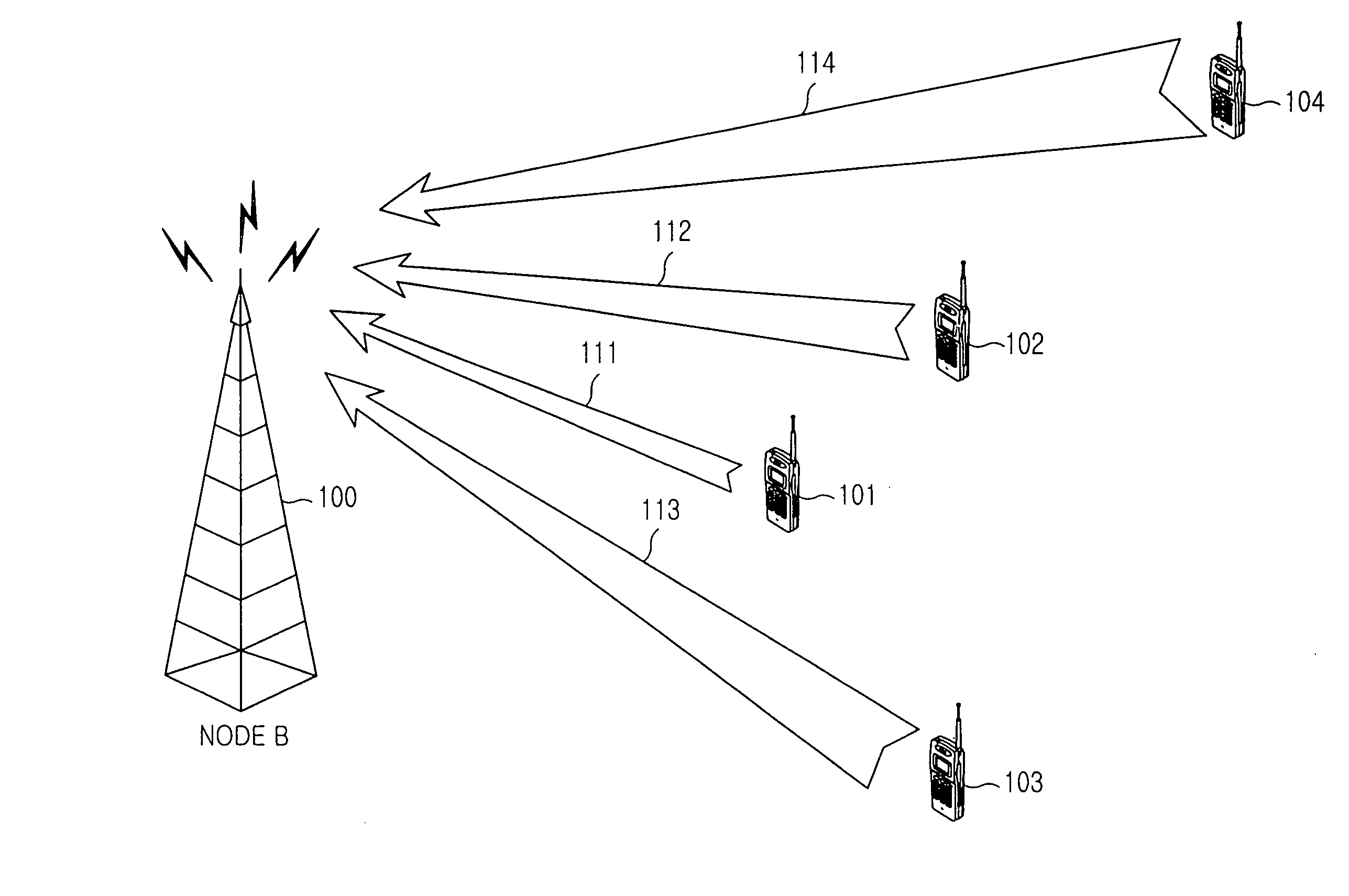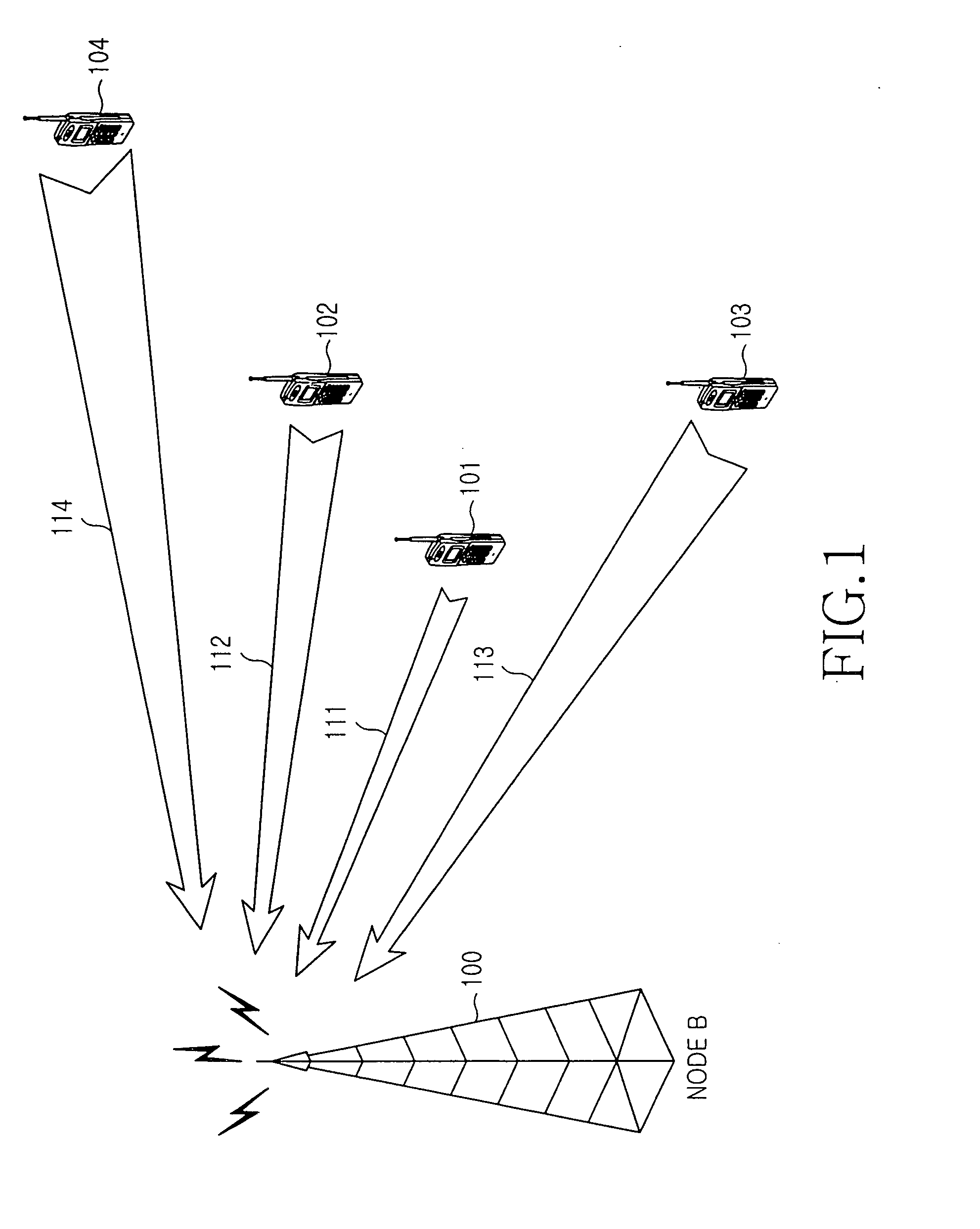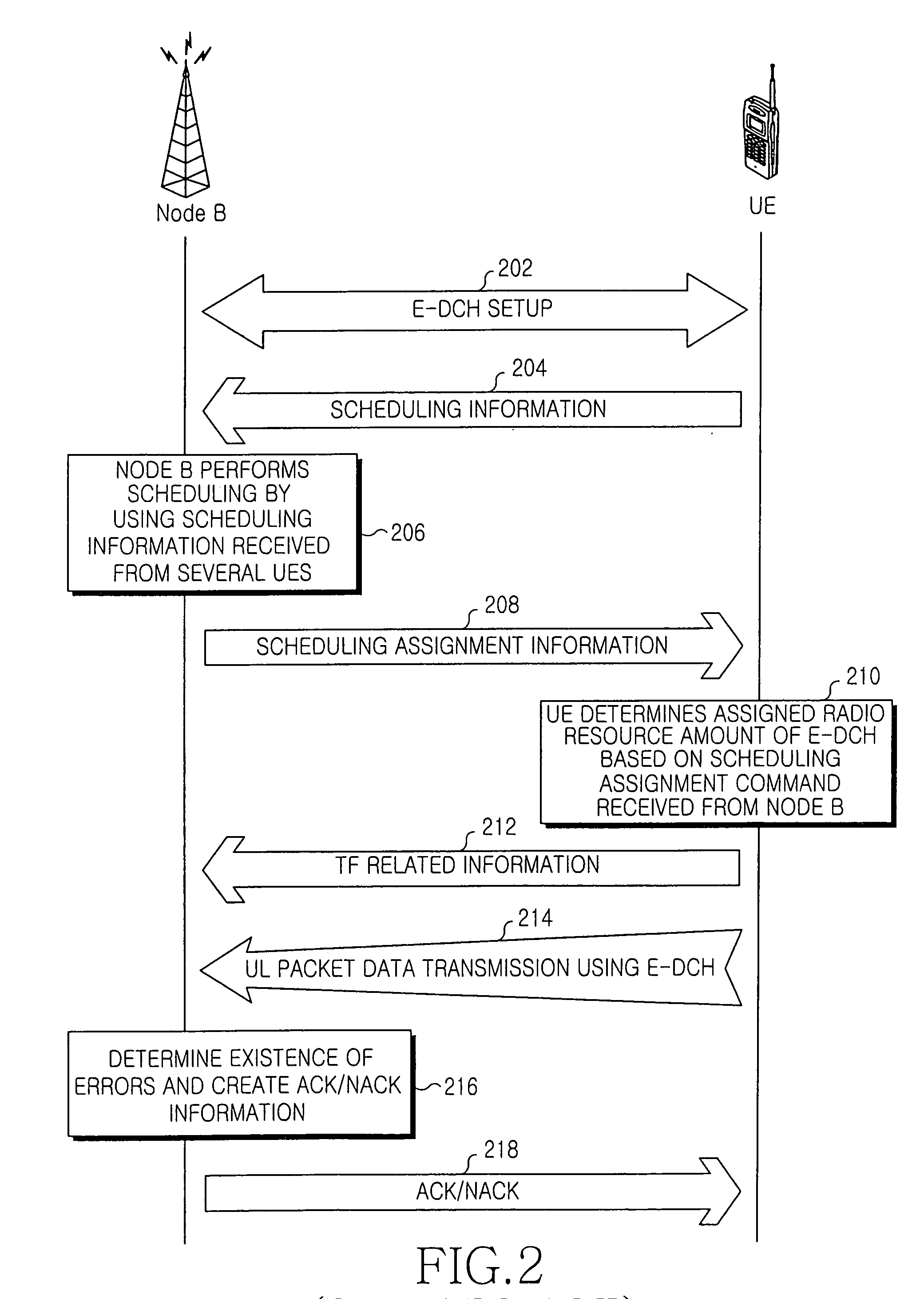Method for configuring gain factors for uplink service in radio telecommunication system
a radio telecommunication system and gain factor technology, applied in power management, transmission monitoring, multiplex communication, etc., can solve the problems of significant signaling resources consumed by computed gain factor schemes, and achieve the effect of efficiently notifying gain factors necessary for e-dch transmission
- Summary
- Abstract
- Description
- Claims
- Application Information
AI Technical Summary
Benefits of technology
Problems solved by technology
Method used
Image
Examples
example 1
[0072] In Example 1, when it is intended to use the computed gain factor scheme, a TF is chosen for the E-DCH, and a signaled TF nearest to the chosen TF, from among signaled TFs having smaller TFIs or TB sizes than that of the chosen TF, is selected as a reference TF.
[0073] A TF set comprising of 18 TFs as stated above in connection with FIG. 5 is used for explaining this Example. Of such a TF set, gain factors for 3 TFIs, that is, TFI 0, TFI 2 and TFI 11 are notified as shown in FIG. 7.
[0074] Referring to FIG. 7, the first column denotes Indicators successively assigned to signaled TFs, that is, k, the second column denotes original indicators of the signaled TFs, that is, RTFI(k), third column denotes the TB sizes of the signaled TFs, and the fourth column denotes gain factors for the signaled TFs. In this way, only by signaling gain factors for some TFs, that is, TFI 0, TFI 2 and TFI 11, a UE can configure a reference TF for each TF from TFI 1, a gain factor of which is not si...
example 2
[0082] In Example 2, when it is intended to use the computed gain factor scheme, a TF is chosen for the E-DCH, and a signaled TF nearest to the chosen TF, from among signaled TFs having greater TFIs than that of the chosen TF, is selected as a reference TF.
[0083] A TF set comprising of 18 TFs as stated above in connection with FIG. 5 is used for explaining this Example. Of such a TF set, gain factors for 3 TFIs, that is, TFI 1, TFI 10 and TFI 17 are notified as shown in FIG. 10.
[0084] Referring to FIG. 10, the first column denotes Indicators successively assigned to signaled TFs, that is, k, the second column denotes original indicators of the signaled TFs, that is, RTFI(k), third column denotes the TB sizes of the signaled TFs, and the fourth column denotes gain factors for the signaled TFs. In this way, only by signaling gain factors for some TFs, that is, TFI 1, TFI 10 and TFI 17, a UE can configure a reference TF for each TF from TFI 0, a gain factor of which is not signaled, ...
example 3
[0092] In Example 3, when it is intended to use the computed gain factor scheme, a TF is chosen for the E-DCH, and a signaled TF nearest to the chosen TF, from among signaled TFs, is selected as a reference TF.
[0093] A TF set comprising of 18 TFs as stated above in connection with FIG. 5 is used for explaining this Example. Of such a TF set, gain factors for 3 TFIs, that is, TFI 1, TFI 6 and TFI 14 are notified as shown in FIG. 13.
[0094] Referring to FIG. 13, the first column denotes Indicators successively assigned to signaled TFs, that is, k, the second column denotes original indicators of the signaled TFs, that is, RTFI(k), third column denotes the TB sizes of the signaled TFs, and the fourth column denotes gain factors for the signaled TFs. In this way, only by signaling gain factors for some TFs, that is, TFI 1, TFI 6 and TFI 14, a UE can configure a reference TF for each TF from TFI 0, a gain factor of which is not signaled, to calculate its gain factor by using the referen...
PUM
 Login to View More
Login to View More Abstract
Description
Claims
Application Information
 Login to View More
Login to View More - R&D
- Intellectual Property
- Life Sciences
- Materials
- Tech Scout
- Unparalleled Data Quality
- Higher Quality Content
- 60% Fewer Hallucinations
Browse by: Latest US Patents, China's latest patents, Technical Efficacy Thesaurus, Application Domain, Technology Topic, Popular Technical Reports.
© 2025 PatSnap. All rights reserved.Legal|Privacy policy|Modern Slavery Act Transparency Statement|Sitemap|About US| Contact US: help@patsnap.com



